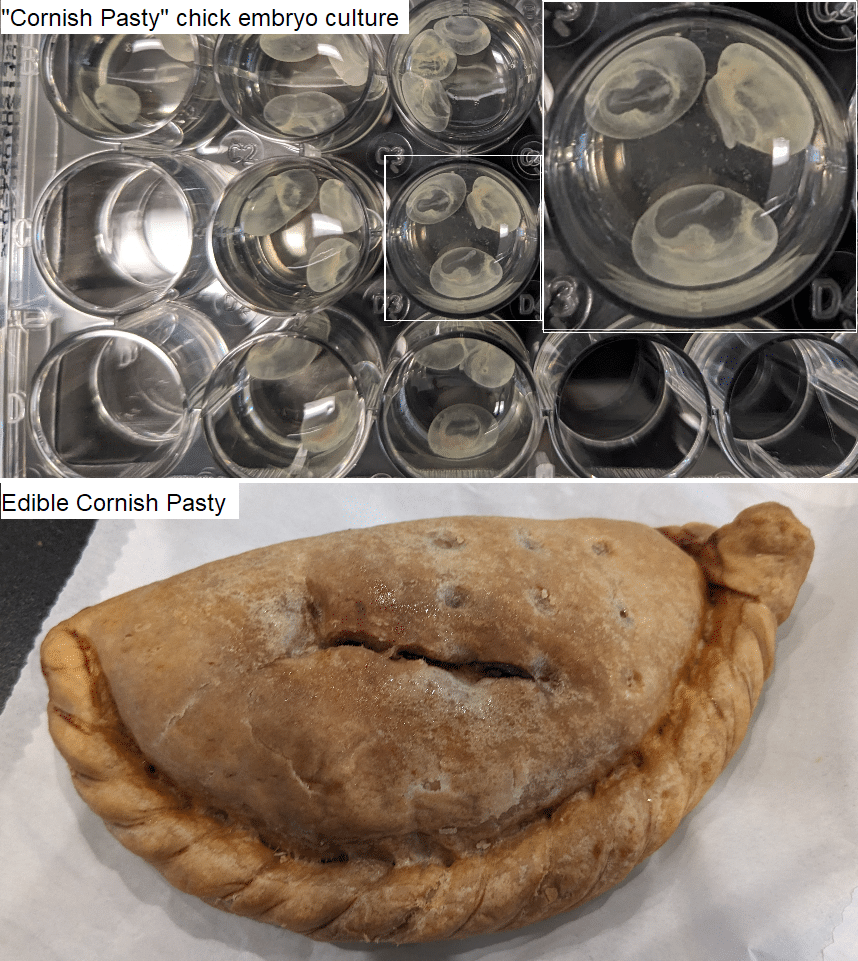When the collaboration makes it out of the joint lab meeting
Posted by Elizabeth-Ann Legere, on 3 October 2024

I am incredibly grateful to The Company of Biologists (Journal of Cell Science) for funding my three-week research collaboration with the lab of Dr. Gabriel Galea at University College London (UCL). My research in Dr. Aimee Ryan’s lab uses chick embryos to examine cell morphogenetic changes and protein localization patterns during neural tube development, the precursor to the central nervous system. We were looking for a way to measure forces during neural tube development and Dr. Galea’s lab was the perfect fit for a collaboration to use laser ablation to infer tissue tension in chick embryos undergoing neural tube closure. This experience exceeded my expectations in every way. Not only did we obtain measurable data that will contribute to at least one major figure in my next manuscript, but this data has also shaped the direction of our future experiments and research questions.
We used the first week for troubleshooting and validated that the technique is viable for answering our specific questions about tissue tension. Once the experimental parameters were established, we were able to work our way through many rounds of ablations over the next two weeks which when analyzed revealed some unexpected but exciting results! Outside of ablations we took some beautiful confocal images of whole embryos stained with phalloidin to mark F-actin that I can use to mark cells over the entire embryo. Without the support from the Company of Biologist and Dr. Galea we would have not been able to collect this data in a reasonable timeframe.

At UCL I was able to meet amazing people within Dr. Galea’s lab and the larger neurodevelopmental group including the labs of Dr. Andrew Copp and Dr. Nicholas Greene who are also respected leaders within the neural tube scientific research community. I felt very welcomed, and enjoyed talking with everybody about their research, and things to see and eat in London. It was inspiring to hear about all the different way of approaching neural tube development research, with everyone working in their own way towards helping people affected by neural tube defects.
This trip was my first time visiting the United Kingdom and I had a lot of fun visiting the museums and taking a day trip to Oxford. I loved climbing up the towers and getting a bird’s eye view of how the city has developed over more than a thousand years. As someone who works with chick embryos, it was cool to eat a Cornish pasty, a semicircle shaped pastry that gave its name to the Cornish pasty technique to culture chick embryos in liquid media. Unfortunately, they were not something I could bring back to my lab in Canada, but they got to enjoy some delicious British chocolates.
Overall, I learned so much during my stay at UCL and really opened a new avenue for my project looking at the role of tissue mechanics. Dr. Galea dedicated so much time and effort to making sure that my stay yielded as much data as we could get and I will fondly remember all the hours spent at the confocal with a trapped expert audience to discuss ideas, questions and my project. This collaboration has been instrumental in advancing my research, and my own growth as a scientist.


 (No Ratings Yet)
(No Ratings Yet)